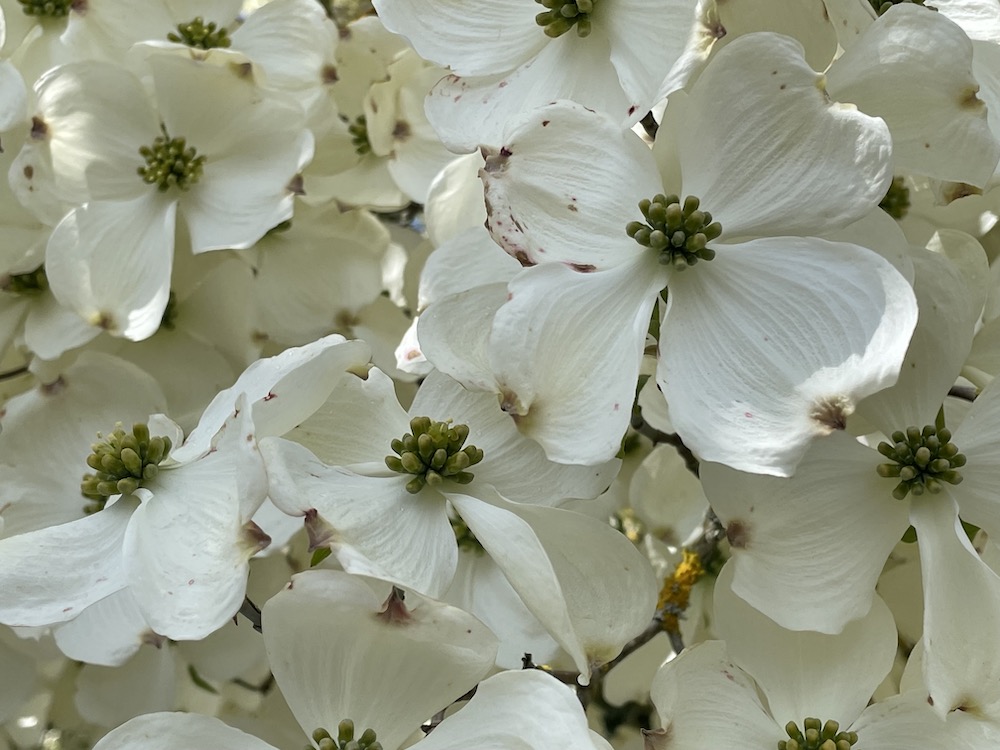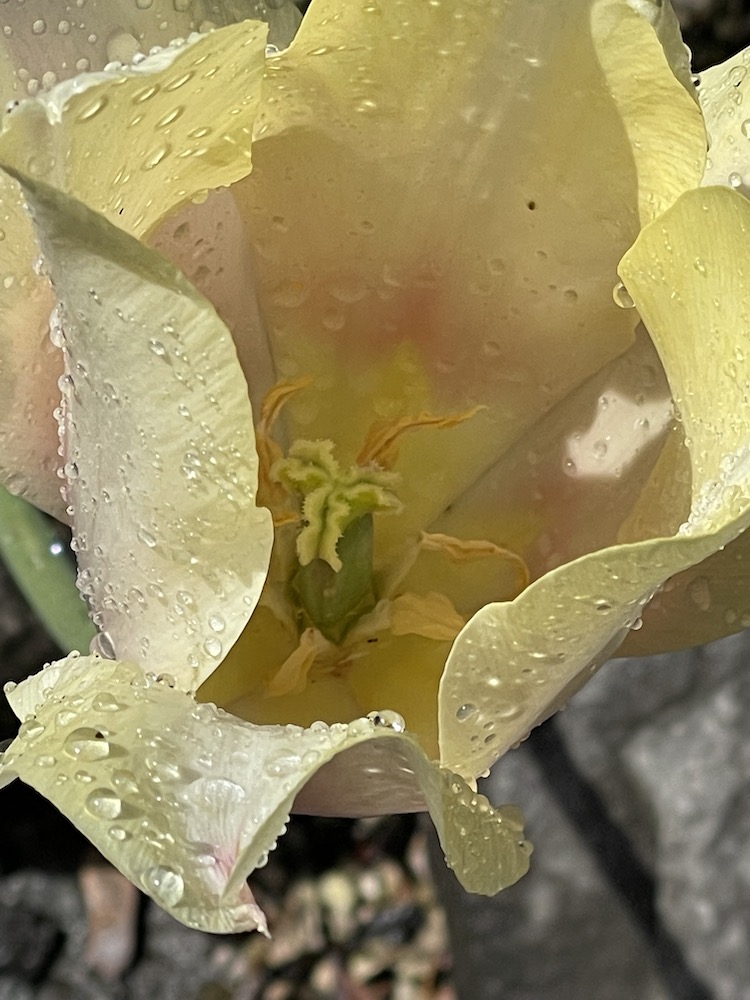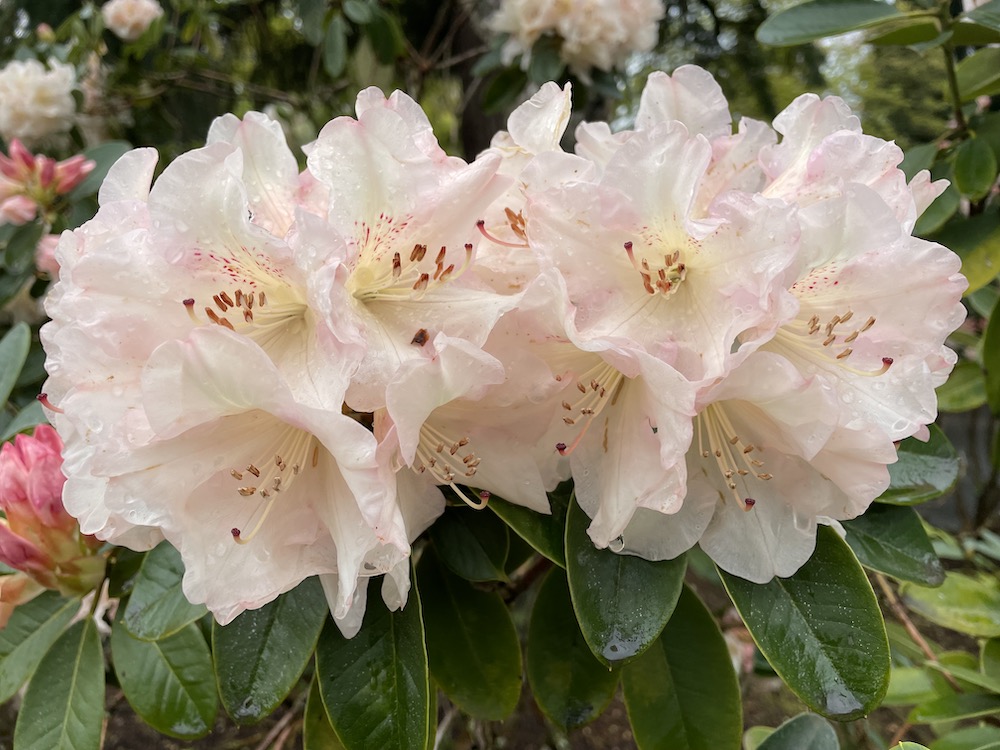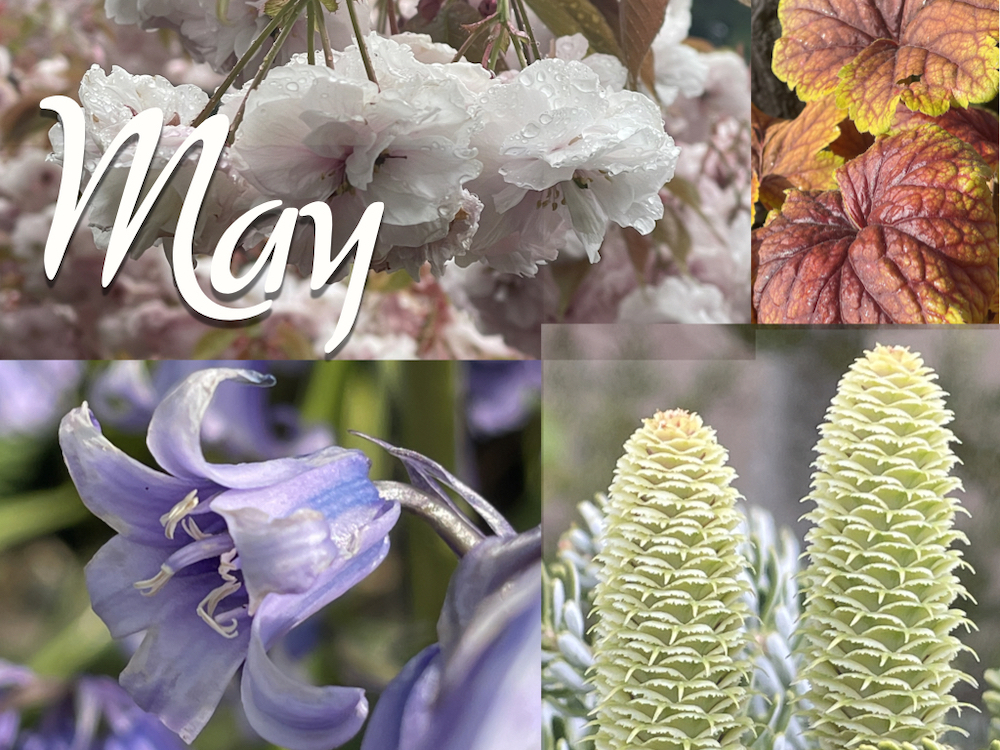
This guide is tailored for the western valleys of Oregon and Washington
YOU can help to make the world a better, a more friendly, loving and beautiful place by being a good steward of the spot on this earth, your garden, that you have been given the privilege of borrowing for a time. It is our hope that the following to-do list will help you to do just that.
Nathan, the Treevangelist, urges you to treat your spot on this planet like your own personal Garden of Eden. May it become your personal paradise. This is your divinely mandated responsibility. Your trees, shrubs, flowers and the wildlife in your yard will pay you back as they express their smiling appreciation to you and yours by radiating their love, joy and beauty bursting forth with vibrant and verdant life. Below is a to-do list to help fulfill this mission.
The newcomers to this region may be wondering what’s with all the rain this year. News flash! And this will come as no surprise to Pacific Northwest natives, but this is typical weather for the western coastal areas and valleys of the northwest Oregon and Washington. Okay, you’re right. This year has been a little wetter than usual. After all, the Portland area recorded well over five inches of rain—a new record. But this is a really good thing. We’re about the only region in the western U.S. that’s not currently in drought conditions, and that’s a mega-blessing! Everywhere south and east of here is still in moderate to severe drought mode. So enjoy that liquid sunshine which will mean a more lush and greener environment, fewer forest fires, less tree die off, and healthier and happier trees and plants everywhere, since they will be less susceptible to drought and pest stress. And finally, more rain means lower irrigation bills us all. Yay! That’s awesome new, is it not? And this has all been brought to you by our friend, The Rain.
While you’re at it, take a few moments and scroll back through this same Good News Tree Service, Inc. blog and check out the archives for any tree and plant care articles that you may have missed. Also check out our YouTube channel at https://www.youtube.com/channel/UCvcu2lL9NpgoXQtUFYyQShw, our Facebook page at https://www.facebook.com/GoodNewsTreeService/ and our main website at www.goodnewstree.com. Please enjoy!
Readers’ suggestions on how to improve this list are gladly solicited. If you, the reader, have any suggestions for additions to this month’s list, please put them in the comments section of this article, and I will add them to the list. Thank you in advance! — Nathan the Treevangelist
Tree and Shrub Care

- Mulch. Apply two to three inches of mulch around all trees and ornamental shrubs. This helps to fertilize the plants and feed the soil, and also protects them against weed growth and loss of water when the warmer weather returns.
- Pine tree pruning. Don’t do major pruning of pine trees during the growing season, since this attracts sequoia pitch moth infestation.
- Pruning of large trees. Most trees in the temperate western valleys of Oregon and Washington can be pruned anytime of the year. If you’re not sure what to do, or how to do it, call Good News Tree Service, Inc. for a consultation, pruning lessons or to have them do the pruning for you.
- Prune fast growing ornamental shrubs that are beginning to look shabby. You may need to prune them again in the early summer for a more neat and manicured look.
- Reparative pruning. Repair winter damaged to trees and shrubs.
- Rhododendrons. Remove old blooms (called “dead heading”). Though it looks better aesthetically to remove the dead blooms, it doesn’t hurt the plants to leave them on.
- Tree and shrub removal and stump grinding can be done all year long.
- Tree inspections. Have an ISA Certified Arborist with an ISA Tree Risk Assessment Qualification (like Good News Tree Service, Inc.) inspect your large trees for the potential of failure due to weak root systems and defects in trunks and branches. This can be done anytime of the year.
- Water trees and shrubs as necessary, even before the summer heat starts. This geographical region has entered a period of erratic rain patterns, so even during the typically consistent rainy winter and spring seasons, due to the long periods of dry weather, some tree and shrubs will need extra water. Vigilance is the key. Watch your plants for signs of drought stress, and then give them a drink of water as needed.
Plant Health Care
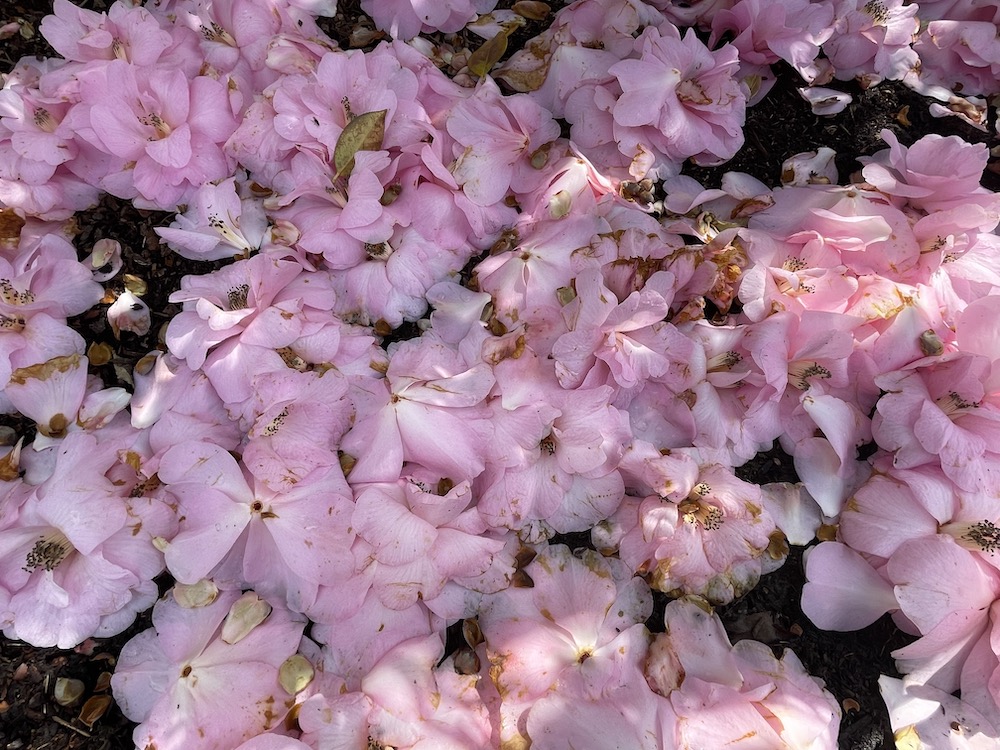
Good News Tree Service, Inc. provides full plant health care services as listed below.
- Apple scab on ornamental crabapple and fruiting apple trees. The first visible symptoms occur on leaves in spring as pale, yellowish, water-soaked spots the size of a pinhead. These enlarge, becoming darker and smoky in appearance, later taking on an olive shade and ultimately a brownish black color. Spots may be any shape but are frequently circular. Young infections often show a radiating spread of fungal tissue through the leaf, and such areas later appear as irregular, brown-colored infections. Diseased leaves can be curled and distorted and often drop early. This fungal disease can also move into the fruit to produce a scabby effect, hence the name “apple scab.” Several fungicidal sprays are required to control this disease just prior to flowering and after flowering.
- Arborvitae twig blight. Spray in the spring and early summer when new growth starts at two week intervals.
- Bronze birch borer. Begin treating in mid-May through June. This is the only time of year that this beetle can be effectively controlled.
- Cherry leaf spot. Spray cherry trees for leaf spot. Apply first spray at petal fall and two weeks later.
- Cherry tree brown rot Blossom blight (Monilinia fructicola). Make 3 foliar applications starting at bud break and at 14 day intervals.
- Coryneum blight (shot hole fungus) or cherry leaf spot. This leaf blight affects ornamental and flowering cherry, plum and prune trees. Spray at petal fall, shuck fall and two weeks later.
- Deep root fertilization. Trees and ornamental shrubs—deep root fertilize to promote lush, healthy-looking and vigorous crown growth. Urban soils tend to lacking in many of the nutrients that trees and shrubs need to survive. Many are malnourished or are starving to death, which is why they don’t look radiantly healthy are struggling with pest issues. Deep root fertilization helps to promote healthy-looking and pest-resistant trees and shrubs. The best time of the year to do this is in the spring and fall.
- Dogwood Anthracnose. Spraying with a fungicide at bud break and continue at 10 to 14 day intervals.
- Leaf Blights. Spray trees and shrubs for fungal leaf diseases (e.g. powdery mildew, leaf blights, dogwood anthracnose, needle blights, etc.).
- Monitor trees and shrubs for insect pests. Piercing and sucking plant pests (e.g. aphids, lacebugs, scales, weevils, mites, etc.) are now out and active. If major infestation occurs, plan a course of action to treat your trees and shrubs against these pests. Small numbers of piercing and sucking insects are not harmful to plants. In fact, they provide food for the beneficial, predatory insects that feed on them. To control harmful insects, one can apply systemic insecticides against piercing sucking insects (aphids, lacebugs, scales, weevils, etc.) via soil injections (one treatment gives season-long control). If applied according to label directions, this will kill only the harmful and not beneficial insects.
- Photinia leaf spot. Spray with a fungicide as new shoots are developing at 30 day intervals.
- Pine dothistroma needle blight. Apply fungicide at just before bud break and a few weeks later according.
Powdery Mildew. Apply a fungicides as soon as symptoms appear. Best efficacy occurs if used before symptoms appear. Use fungicide at 7 to 14 day intervals, or more often if conditions warrant it. If a plant is known to have had powdery mildew previously, apply as buds start to open. - Spider mites will start to become active as the weather warms. Systemic insecticides are available against this pest.
- Tent Caterpillar. Apply systemic pesticide for season-long control.
- Verticillium Wilt. Soil drench in the spring. Maples are especially susceptible to this fungal root disease as are cherries and plums.
- Willow Twig Blight (scab). Apply two or three applications beginning when new leaves first appear at 10 to 14 day intervals.
Elsewhere in the Garden
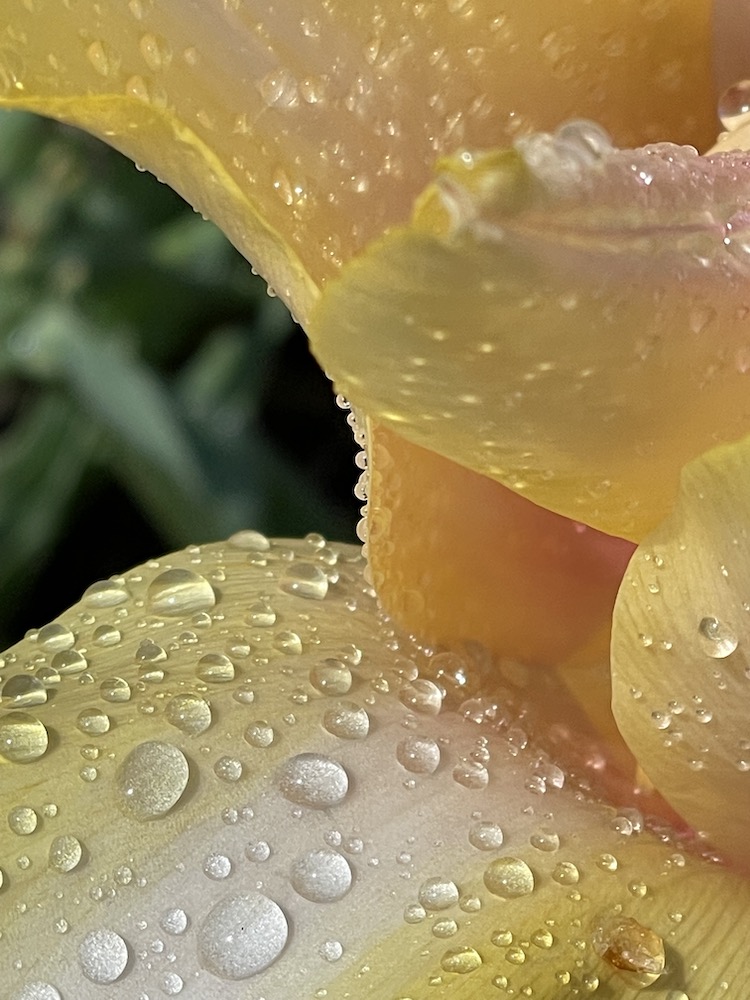
- Annual and perennial plants. May is when your local garden centers begin selling both annual and perennial plants with colorful leaves and flowers to add splashes of color to your garden. Annuals typically are plants that need to be planted in the garden each year, since they are unlikely to survive the colder temperatures of winter. Some annuals like California poppy and violets will automatically reseed themselves and come up again in the spring. Most annuals, however, need to be replanted each spring. Popular colorful annual plants include begonia, coleus, cosmos, forget-me-not, geraniums, impatiens, marigold, nasturtium, pansy, petunia, snapdragons, sunflower, sweet william, violets and zinnia. Perennials are plants whose tops die back each winter, but come back from the roots in the spring. Common perennial plants that will add color to your garden include alstromeria, bleeding heart, carnation, calendula, clematis, columbine, chrysanthemum, coral bells (heuchera), daisy, daffodil, dahlia, daylilly, fuchsia (hardy varieties), gladiola, hellebore, hosta, iris, lavender, lupine, peony, primrose, red hot poker, tulip and yarrow.
- Birds. Continue to keep your bird feeders full. Why? Even though we’re now past the winter season and there is more food available for the birds, having these feathery friends frequent your garden serves several purposes. During dry spells, keep your bird bath watering hold full of fresh water. Caring for the local wild birds brings life and excitement to your backyard by turning it into a bird-friendly sanctuary. The birds will thank you for your generosity by providing you with hours of entertainment, and by eating insect pests that harm your ornamental trees and shrubs. You can find excellent bird care products and advice from knowledgeable and caring professionals at your local Backyard Bird Shop.
- Fertilization. Fertilize your ornamental shrubs with a slow release fertilizer. If the shrubs have a layer of barkdust or other mulch around them, rake the mulch away and apply the fertilize to the bare dirt, so that it actually reaches the plant’s root zone.
- Ivy on trees. Though a decorative evergreen ground cover and climbing vine, English ivy is considered an invasive species, since it spread so rapidly and birds disperse its seeds everywhere. It will soon take over your yard and garden if not contained. Even worse, it grows up into trees, and even though it is not parasitic in that it takes nutrients from its host tree, it can eventually choke smother a tree foliage depriving the leaves of life-giving sunlight. The loss of foliage can stress and even eventually kill a trees. This is why it is imperative to cut ivy away from the base of your trees. The ivy climbing up into a tree can be killed simply by cutting through its stalks at the base of the tree. This can be done any time of the year.
- Mulching. Apply two to three inches of mulch (e.g. bark dust, garden compost or wood chips) on all of your shrub beds. Covering bare dirt areas in your yard with mulch helps to prevent soil compaction from rains, and weed growth, and helps to enrich our heavy clay soils.
- Slugs. Put slug bait around your flowers and tender perennials like primroses and hostas.
- Tree and shrub planting. This is a good time of the year to plant trees and shrubs. Visit your local nursery and select your favorite ornamental shrubs and shade trees. After planting your new shrubs, just make sure that you water them well immediately and regularly subsequently for the first two or three summers until their roots get established. During warm weather (in the 60s to low 80s), deep root water once per week. During hot weather (mid-80s and higher) deep root water at least twice per week.
- Vegetable garden. Start making plans for your vegetable garden. Once the soil has dried out, you can begin working it for planting our veggies. Usually this will occur in late April or early May and sometimes later depending on the weather. The earlier you plant, the sooner you’ll be feeding on delicious veggies from your own garden!
- Watering. Water and fertilize annuals and perennial flowers. The hotter the weather, the more water they will need. Flowers in pots and hanging baskets dry out especially quickly, and so need watering every day or two.
Care of Roses
- Dealing with rose pests. Spray or treat roses with a fungicide as needed preventively to insure protection against fungal pathogens such as black spot, powdery and cottony mildew, rust and spot anthracnose. Apply a fungicide only after the rose has put out several inches of new growth. Excellent choices of both organic and inorganic fungicides are available at your local garden center or nursery. Some fungicides require spraying in the early spring as the new growth is emerging. Major plant pests include mites, aphids, thrips, rose slugs, leaf rollers, rose midge, spittle bug and sawfly. Determine what pest or disease your rose has, do some research online if necessary to ascertain this, and then visit your local garden center or nursery to find the right product for the job. Always read and follow all label directions. It’s the law!
Lawn Care
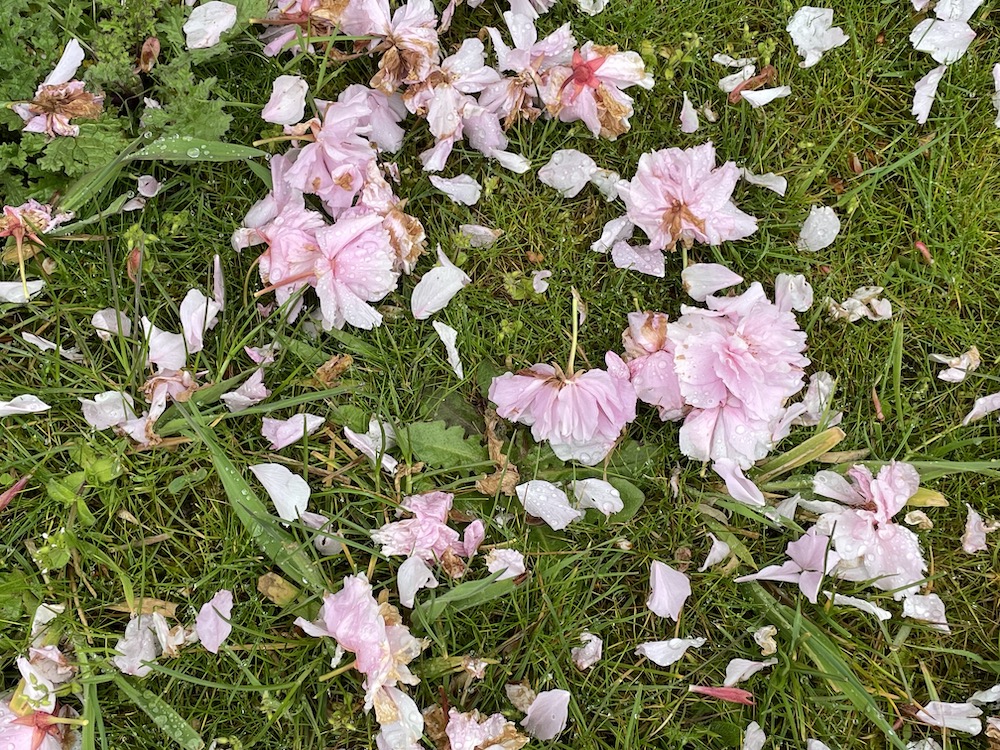
- Overseed bare spots. When the weather begins to warm up, but are not too hot and there is still regular rainfall, and when the grass begins to grow, it is an excellent time to overseed bare or thin spots in your yard. Fall is the best time of the year to reseed bare areas of your lawn, while spring is the second best time.
- Start mowing. Begin to mow your grass every week or as needed. For the best results, do not remove more than one-third of the top growth of your grass at a time. Grass can be kept shorter during cooler weather, but when the hot summer weather begins, it is less stressful on the grass to allow it to remain at about two to three inches tall. This also helps the grass to choke out any weeds that might try to grow up through it.
- Weed control. Annual weeds, such as crabgrass, grow from seed each spring. A well-timed application of preemergence herbicide to stop them from growing is called for at this time of the year. A good guideline is to spread the preemergence herbicide as forsythia blooms in your area start to drop.
- Fertilization. Feeding your lawn at least couple of times a year is a must. One fertilization in the spring and one again in the fall is the minimum requirement to maintain a healthy lawn.
